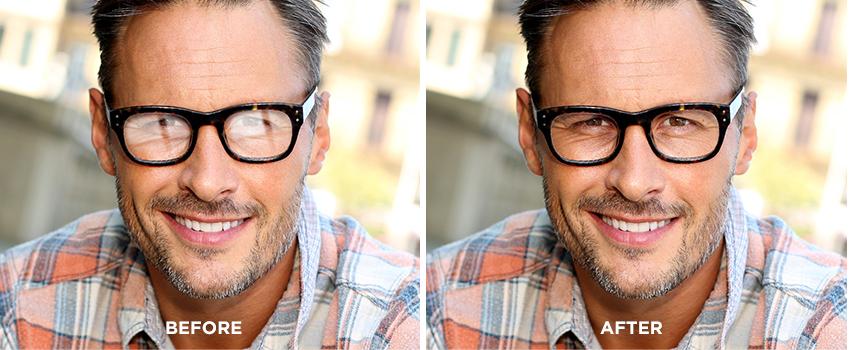Anti reflection coating explained

Get the most out of your glasses by choosing lenses with an anti-reflection coating. It's not just your glasses that can be coated with this in order to help your eyes… you can also add it to screens, and cameras! Here’s what an anti-reflection (AR) coating is and how it works…
Defining Anti-Reflection Coatings
An anti-reflection (AR) coating is a thin layer of material applied to the surface of optical components, such as lenses, glass panels, and displays, with the primary purpose of minimising the reflection of light. This ingenious technology has become an integral part of various devices, enhancing visual clarity.
The Mechanics of Anti-Reflection Coatings
Imagine looking at a piece of glass. When light interacts with the surface of the glass, a portion of the light is reflected back, creating unwanted reflections that can distort or obstruct the view. The intensity of these reflections can vary depending on factors like the angle of incidence and the refractive indices of the materials involved.
Anti-reflection coatings work by manipulating the behaviour of light as it transitions from one medium (such as air) to another (such as glass). This transition causes a portion of the incident light to be reflected at the interface due to the difference in refractive indices. The goal of the AR coating is to minimise these reflections by carefully engineering the thickness and refractive index of the coating material.
Key Features and Mechanisms of AR Coatings
- Interference: AR coatings are designed to create a phase difference between the reflected waves from the surface of the coated material and the reflected waves from the underlying substrate. This phase difference can lead to destructive interference, causing the reflected waves to cancel each other out, thereby reducing the overall reflection.
- Multilayer Design: Most anti-reflection coatings consist of multiple layers with varying refractive indices. By strategically selecting the thickness and refractive index of each layer, the coating can be optimised to reduce reflections across a specific range of wavelengths, leading to enhanced performance across different lighting conditions.
- Index Matching: The refractive index of the AR coating is often chosen to be somewhere between the refractive indices of the surrounding medium (e.g., air) and the substrate material. This index matching minimises the abrupt change in the refractive index at the interface, reducing the intensity of reflected light.
- Gradient Index: Some advanced AR coatings utilise a gradient refractive index profile, meaning that the refractive index gradually changes from the air side to the substrate side. This gradual transition further minimises reflection by reducing abrupt changes in the path of light.
- Broadband Performance: Effective anti-reflection coatings are designed to work across a wide range of wavelengths, allowing for better performance under various lighting conditions and ensuring a consistent viewing experience across different devices.
Benefits of AR Coatings on Glasses
- Sharper Visuals: By minimising reflections and glares, AR coatings significantly improve image clarity and contrast, allowing you to see details more clearly and vividly.
- Reduced Eye Strain: Lenses with an AR coating can reduce eye strain, as wearers can view content without the need to strain their eyes to compensate for reflections or glares.
- Improved Aesthetics: AR coatings can also improve the aesthetic appeal of glasses by providing a sleek and modern appearance, free from distracting reflections.
- Reduced Reflections: An AR coating on your glasses reduces the light being reflected off of the lens, this can mean others can see your eyes more clearly. This can be particularly important in the film industry whereby the reflected light from glasses can obscure the actor or news reader's eyes.
Anti Reflective coatings won't change the look of your glasses but they can change the way you look at the world and the world looks at you. The revolutionising technology behind the coating allows you to see the world as though you were glasses-free. You deserve to see the benefits yourself… try them today!
Author: John Dreyer Optometrist Bsc(Hons), MCOPTOM, DipCLP
Created: 20 Sep 2023, Last modified: 7 Jan 2025

